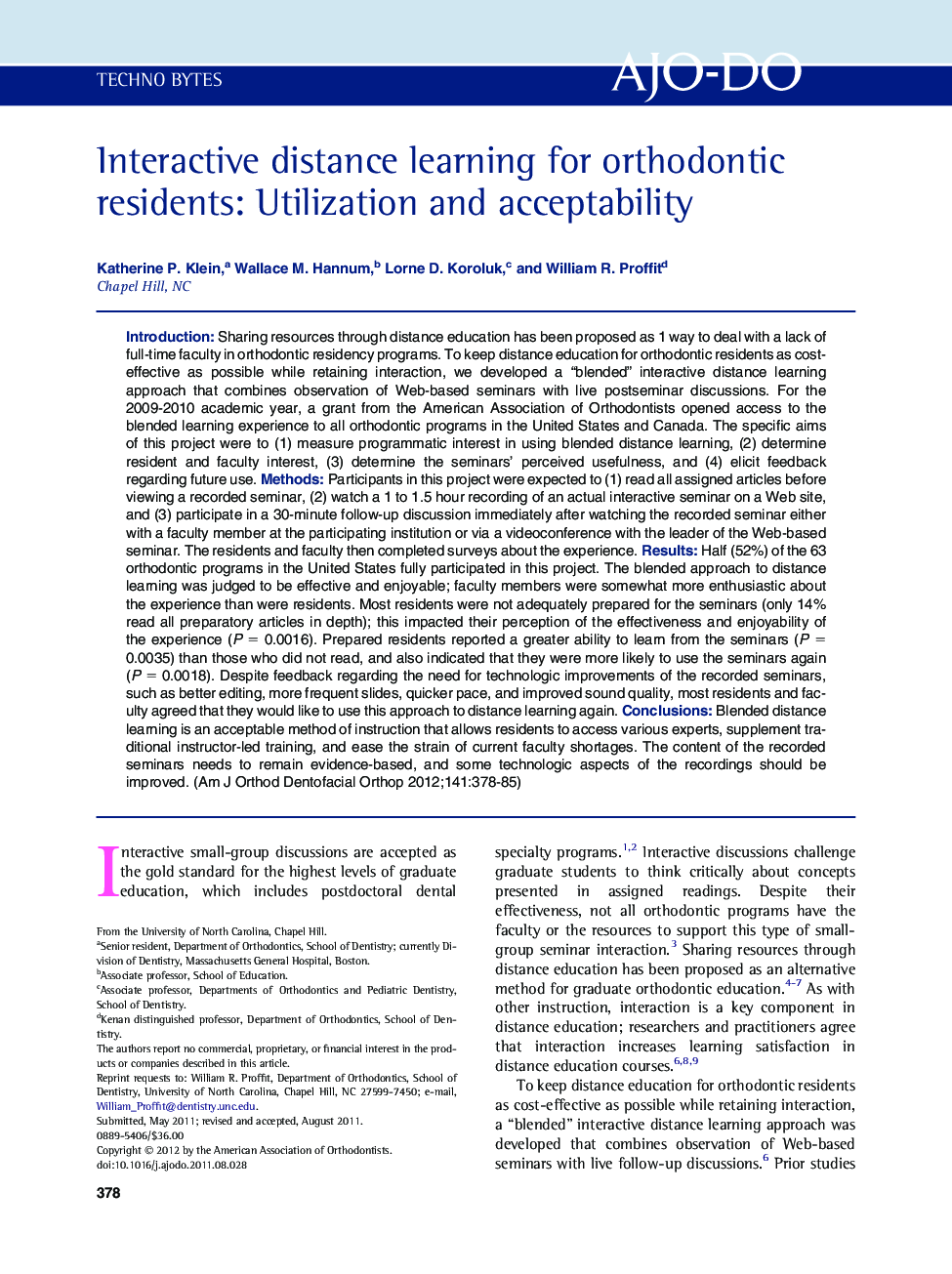| Article ID | Journal | Published Year | Pages | File Type |
|---|---|---|---|---|
| 3117887 | American Journal of Orthodontics and Dentofacial Orthopedics | 2012 | 8 Pages |
IntroductionSharing resources through distance education has been proposed as 1 way to deal with a lack of full-time faculty in orthodontic residency programs. To keep distance education for orthodontic residents as cost-effective as possible while retaining interaction, we developed a “blended” interactive distance learning approach that combines observation of Web-based seminars with live postseminar discussions. For the 2009-2010 academic year, a grant from the American Association of Orthodontists opened access to the blended learning experience to all orthodontic programs in the United States and Canada. The specific aims of this project were to (1) measure programmatic interest in using blended distance learning, (2) determine resident and faculty interest, (3) determine the seminars’ perceived usefulness, and (4) elicit feedback regarding future use.MethodsParticipants in this project were expected to (1) read all assigned articles before viewing a recorded seminar, (2) watch a 1 to 1.5 hour recording of an actual interactive seminar on a Web site, and (3) participate in a 30-minute follow-up discussion immediately after watching the recorded seminar either with a faculty member at the participating institution or via a videoconference with the leader of the Web-based seminar. The residents and faculty then completed surveys about the experience.ResultsHalf (52%) of the 63 orthodontic programs in the United States fully participated in this project. The blended approach to distance learning was judged to be effective and enjoyable; faculty members were somewhat more enthusiastic about the experience than were residents. Most residents were not adequately prepared for the seminars (only 14% read all preparatory articles in depth); this impacted their perception of the effectiveness and enjoyability of the experience (P = 0.0016). Prepared residents reported a greater ability to learn from the seminars (P = 0.0035) than those who did not read, and also indicated that they were more likely to use the seminars again (P = 0.0018). Despite feedback regarding the need for technologic improvements of the recorded seminars, such as better editing, more frequent slides, quicker pace, and improved sound quality, most residents and faculty agreed that they would like to use this approach to distance learning again.ConclusionsBlended distance learning is an acceptable method of instruction that allows residents to access various experts, supplement traditional instructor-led training, and ease the strain of current faculty shortages. The content of the recorded seminars needs to remain evidence-based, and some technologic aspects of the recordings should be improved.
